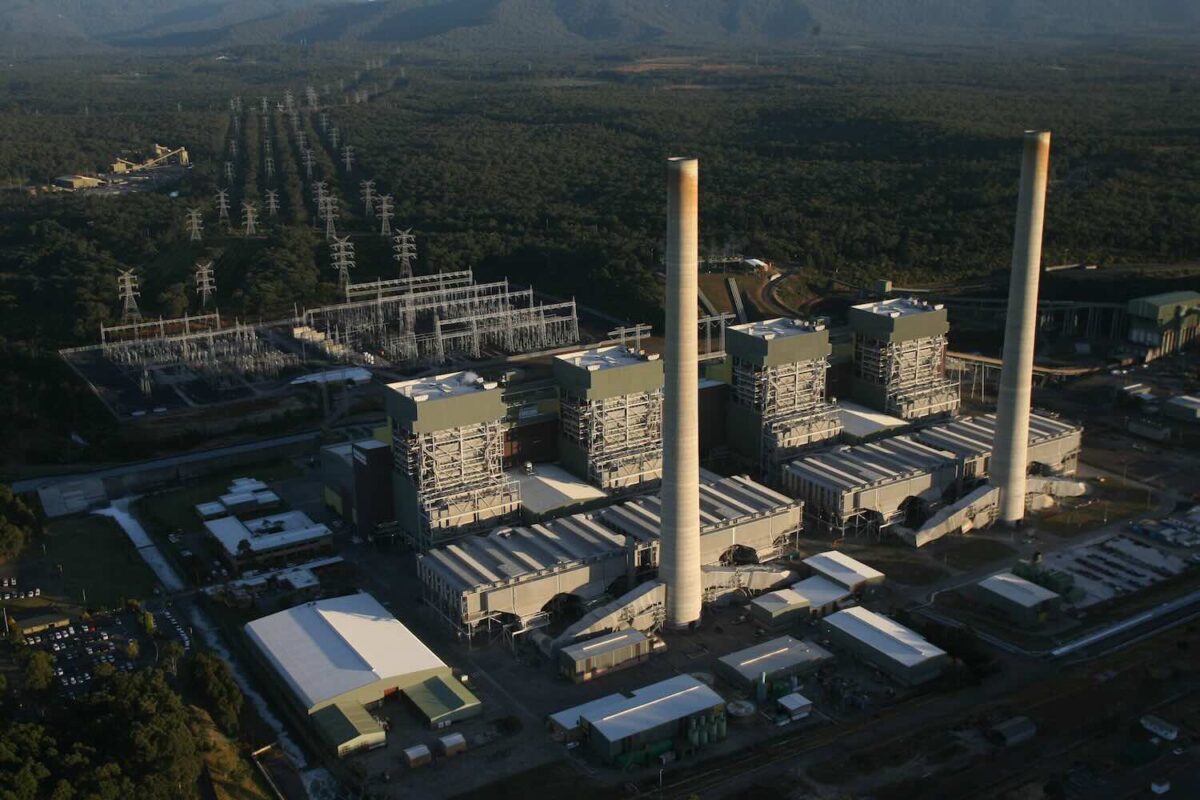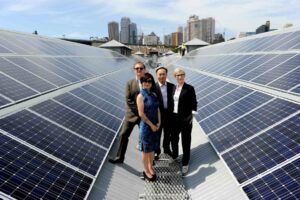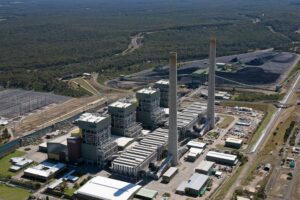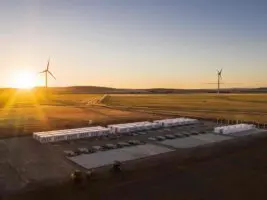The New South Wales state Labor government appears poised to agree to a lengthy extension of the country’s biggest coal generator, Eraring, in what would be a major blow to the country’s clean energy transition, and its 2030 renewables target.
Speculation has been increasing in the last few weeks that NSW will agree to an extension of the 2.88 GW Eraring facility on the central coast to between three and five years beyond its proposed closure date of August, 2025, which its owner Origin Energy announced in early 2022.
The state government, sources say, appears to be split over the closure timing. On one hand, energy minister Penny Sharpe has insisted that Eraring should not be kept open for a “day longer than required”, but premier Chris Minns, who said in the lead up to the last election he wanted the state to buy the plant outright, wants it to stay open longer.
The Guardian reported on Tuesday that the state’s expenditure review committee is due to meet later this week, where it is expected to approve government payments to Origin Energy to ensure it stays open.
Renew Economy understands that the ERC is holding multiple meetings ahead of the upcoming state budget, and it is not clear if and when the Eraring support plan will be discussed. It is also not clear whether the new closure date is being pushed to 2028, 2029, or 2030.
That also depends on costs and final negotiations, but any extension beyond keeping a few units open for another two summers, as originally speculated, will be a blow to the clean energy industry industry, and interpreted as a failure for those arguing against renewables and for nuclear.
The federal Coalition has been arguing that coal fired power stations should be kept open, and large scale renewables stopped, so the country can wait until nuclear small modular reactors can be rolled out at commercial scale, something that is unlikely to occur until the early 2040s, if ever. Still, they will see an Eraring delay as vindication.
Whatever the new closure date, it will be a coup for Origin Energy, which has basically held the state government over a barrel on the closure timing, particularly because the company has done little or nothing to build or contract new capacity to be built in the meantime.
Origin has announced a series of renewable energy project purchases, such as the 1.5 GW Yanco Delta wind farm, and new battery projects at Eraring itself and Mortlake, but none are due to be complete by August, 2025.
Some energy analysts suggest there will be enough capacity built by others to fill in the gap, including the Waratah Super Battery, but Minns in particular is unwilling to take the risk of any reliability issues or high wholesale electricity prices, particularly with a new state poll due in early 2027.
Origin’s biggest problems with Eraring have been access to coal, and dealing with its ash dam. It received approval in 2019 to expand and make changes to the ash dam, but the costs have been prohibitive and it has taken no action to date.
By announcing the “early closure” of Eraring, and doing nothing to build new capacity, Origin now stands poised to receive huge payments from taxpayers that will offset those costs.
The impact will likely be felt across the industry, sending a poor investment signal to developers of new wind, solar and battery projects because it changes their supply and market calculations for most of the rest of the decade.
Developers have already struggled to get their projects through NSW’s tortured planning process, and while the new Capacity Investment Scheme will seek bids of 2.2 gigawatts of new wind and solar in NSW in a process to start next month, none of that will be built before the end of 2025, or even the next year.
Origin Energy would not comment on the speculation on Tuesday. In its March quarter production report, released earlier in the day, it said only that: “We remain in discussion with the NSW Government on the closure date for the Eraring Power Station.”
Sharpe’s office also would not comment. “The NSW Government is engaging with Origin on its plans for Eraring Power Station and will not comment while the process is ongoing,” the minister said in an emailed statement.
On the Australian Energy Market Operator’s generation information page, the closure date for Eraring is still put at August 19, 2025.
In an interview with Renew Economy’s Energy Insiders podcast last Friday, federal energy minister Chris Bowen was asked about the growing speculation that Origin could be kept open for at least three years beyond the August, 2025, closure date and the investment signal that might send.
Bowen said he was not involved in the negotiations, but said he was “keeping a close eye” on the situation.
“Your point about the broader messages it sends is valid,” Bowen told the Energy Insiders podcast.
“But so is the concern to make sure the timing is exactly right. Now, to your question about 82% by 2030. I haven’t heard anyone say that … we’re talking 2025 at the moment, not 2030. But nevertheless, I am aware of the ongoing discussions between New South Wales and Origin.
“Nobody wants to see the closure delayed inordinately. But I understand why states from time to time – NSW is not the only people who have done this – look at a particular closure and say, ‘is this timing absolutely perfect? Or does this need a bit of a tweak’?
“That’s a pretty understandable thing to do in a very complicated, big transition. It’s not going to go linear, not everything’s going to go according to the model every day, life doesn’t work like that. But nevertheless, the direction of travel is very, very clear.”
Still, a lengthy extension to Eraring could raise even more questions about the federal government’s own 82 per cent renewable energy target for 2030, and could cause pricing problems for its Capacity Investment Scheme, given the biggest single generator in the country will be open for longer.
NSW has made it pretty clear that it wished it did own the Eraring power station, if only because a decision could have been made quickly about any delays.
Western Australia has intervened to put one of its coal units in “reserve” for an extra six months to ensure that enough replacement capacity is built, and Queensland has promised to do the same with its state owned generators if needed.
Victoria, which does not own its own coal fired generators, was forced into a secret deal with EnergyAustralia over the timing of the Yallourn power generator, which was painted as an accelerated closure but which in reality likely included payments to ensure it could last until the new closure date of 2028.
“Extending the life of Eraring is a big mistake,” said Stephanie Bashir, an energy analyst from Nexa Advisory who has argued that an extension is not necessary.
“This decision by the Minns government will mean that people in NSW will be paying an additional $120-150 million a year on their energy bills to keep open an inefficient and unreliable coal-fired power station. They’re already paying higher electricity bills than households and businesses in other states.
“This decision will put investment in renewables in the deep freeze when we need it to be running hot! It sends the wrong signal to anyone thinking about investing in renewables in New South Wales. And it will make the Albanese Government’s emission reduction targets much harder to achieve.
“NSW should be getting on with the transition by accelerating planning approvals, which would in turn attract investment in the generation, storage and transmission we need and are built on time.”
The Smart Energy Council described news of the likely extension to the Eraring closure as “shocking”.
“It will be a disaster for the climate and the state’s economy,” acting CEO Wayne Smith said in a statement.
“At a time when people are already deeply worried about cost of living pressures, this will greatly increase power bills, and spew massive amounts of pollution into our atmosphere.”
“Chris Minns is starting to look a lot like Scott Morrison when it comes to Coalkeeper – taxpayer funds to extend the life of polluting coal-fired power stations.”
“Eraring was privatised only ten years ago, and now taxpayers are being asked to pay hundreds of millions of dollars to the private owner to keep it open; it’s a farcical comedy without humour. There is no way Australia can meet its renewable and climate targets if we keep propping up coal-fired power stations, particularly the nation’s biggest.”








